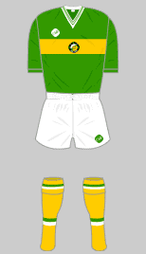 Rep of Ireland jersey versus Norway, May 1985
Rep of Ireland jersey versus Norway, May 1985 The Irish Examiner carried a piece here recently which expressed the views of the Consumers’ Association of Ireland on the current dilemma facing fans regarding whether the Irish jersey will make a good Christmas present. This analysis here might help Irish soccer fans wishing to support the Boys in Green next summer and comes courtesy of data collected from the excellent Historical Football Kits.
The name "Republic of Ireland" first appeared in March 1954 when country defeated Luxembourg 1-0 in a World Cup qualifier in the tiny European state. Prior to this, the team was simply called Ireland. Since 1954 the country has had 39 unique home shirts. This is in line with England for example, who have donned 37 different home shirts since the mid-1950s.
I previously presented data on jersey changes in the Premier League and found that clubs are now in a pattern of changing their home jersey (almost) every season. This is not the case with the Republic of Ireland. While countries, like clubs, saw far less change in the earlier years, jerseys are not ‘expiring’ as quickly on the international stage. This could be a result of the fact that they are only worn 4-5 times a year in many cases.
What can we learn from the past?
Between 1954 and 1965 the country experienced just one jersey change. This would not continue for long however, and there was a step change during the 1970s when new versions of the famous green jersey began to appear more readily.The twenty year period from 1975 to 1995 actually saw more home jerseys than the past twenty years.
In the two year period alone between 1983 and 1985 the country played twenty international matches and wore five different home jerseys, including what looks like a Kerry jersey (see above), against Norway in May 1985.
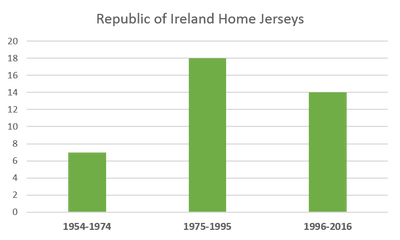
A closer look at the data informs us that from 2004 to 2015 only twice has the jersey changed year-on-year. This happened in 2010-2011 and 2011-2012.
Such an scenario is quite different to club football, and it certainly appears to be the case that this is bucking the trend.
Images in this post are copyright of Historical Football Kits and reproduced by kind permission.
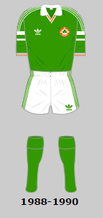
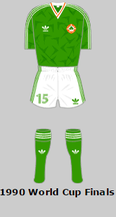
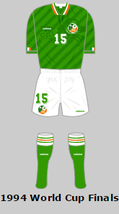
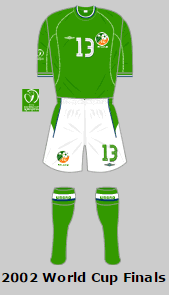
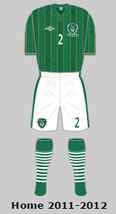
 RSS Feed
RSS Feed